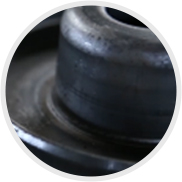 Afrikaans
Afrikaans  Albanian
Albanian  Amharic
Amharic  Arabic
Arabic  Armenian
Armenian  Azerbaijani
Azerbaijani  Basque
Basque  Belarusian
Belarusian  Bengali
Bengali  Bosnian
Bosnian  Bulgarian
Bulgarian  Catalan
Catalan  Cebuano
Cebuano  Corsican
Corsican  Croatian
Croatian  Czech
Czech  Danish
Danish  Dutch
Dutch  English
English  Esperanto
Esperanto  Estonian
Estonian  Finnish
Finnish  French
French  Frisian
Frisian  Galician
Galician  Georgian
Georgian  German
German  Greek
Greek  Gujarati
Gujarati  Haitian Creole
Haitian Creole  hausa
hausa  hawaiian
hawaiian  Hebrew
Hebrew  Hindi
Hindi  Miao
Miao  Hungarian
Hungarian  Icelandic
Icelandic  igbo
igbo  Indonesian
Indonesian  irish
irish  Italian
Italian  Japanese
Japanese  Javanese
Javanese  Kannada
Kannada  kazakh
kazakh  Khmer
Khmer  Rwandese
Rwandese  Korean
Korean  Kurdish
Kurdish  Kyrgyz
Kyrgyz  Lao
Lao  Latin
Latin  Latvian
Latvian  Lithuanian
Lithuanian  Luxembourgish
Luxembourgish  Macedonian
Macedonian  Malgashi
Malgashi  Malay
Malay  Malayalam
Malayalam  Maltese
Maltese  Maori
Maori  Marathi
Marathi  Mongolian
Mongolian  Myanmar
Myanmar  Nepali
Nepali  Norwegian
Norwegian  Norwegian
Norwegian  Occitan
Occitan  Pashto
Pashto  Persian
Persian  Polish
Polish  Portuguese
Portuguese  Punjabi
Punjabi  Romanian
Romanian  Russian
Russian  Samoan
Samoan  Scottish Gaelic
Scottish Gaelic  Serbian
Serbian  Sesotho
Sesotho  Shona
Shona  Sindhi
Sindhi  Sinhala
Sinhala  Slovak
Slovak  Slovenian
Slovenian  Somali
Somali  Spanish
Spanish  Sundanese
Sundanese  Swahili
Swahili  Swedish
Swedish  Tagalog
Tagalog  Tajik
Tajik  Tamil
Tamil  Tatar
Tatar  Telugu
Telugu  Thai
Thai  Turkish
Turkish  Turkmen
Turkmen  Ukrainian
Ukrainian  Urdu
Urdu  Uighur
Uighur  Uzbek
Uzbek  Vietnamese
Vietnamese  Welsh
Welsh  Bantu
Bantu  Yiddish
Yiddish  Yoruba
Yoruba  Zulu
Zulu conveyor side guide rollers
Understanding Conveyor Side Guide Rollers A Comprehensive Overview
Conveyor systems play a pivotal role in modern manufacturing and logistics. They enable efficient movement of goods, ensuring that products reach their destination swiftly and with minimal handling. Among the various components that enhance the functionality of conveyors, side guide rollers stand out for their crucial role in maintaining the alignment and stability of products during transport. This article delves into the significance of conveyor side guide rollers, their functionality, types, and best practices for maintaining them.
What are Conveyor Side Guide Rollers?
Side guide rollers are auxiliary components attached to conveyor systems designed to assist in keeping products aligned as they move along the conveyor belt. Their primary function is to prevent items from drifting off the sides of the conveyor, which can lead to bottlenecks, product damage, or downtime. By providing lateral support, side guide rollers enhance the overall efficiency of the conveyor system and ensure that items arrive at their destination in the correct position.
How Do They Work?
The operation of side guide rollers is relatively straightforward. Typically mounted on both sides of the conveyor belt, these rollers adjust to the size and shape of the products being transported. As goods pass through, the rollers gently guide them, ensuring they stay centered. This is particularly important in high-speed applications where even minor misalignments can result in significant issues.
Moreover, these rollers can be adjustable, allowing operators to modify their position based on the specific requirements of different products. This capability ensures versatility in conveyor operations, accommodating a wide range of items, from small packages to larger crates.
Types of Side Guide Rollers
Side guide rollers come in various designs to cater to different conveyor systems and applications. Some common types include
conveyor side guide rollers

1. Fixed Guide Rollers These are stationary and provide a consistent guiding surface. They are suitable for standard-sized products and offer reliability in maintaining alignment.
2. Adjustable Guide Rollers These rollers can be repositioned to accommodate different product sizes. Their flexibility makes them ideal for dynamic conveyor systems that handle a variety of items.
3. Flanged Rollers Featuring raised edges, flanged rollers help prevent products from slipping off the sides of the conveyor. They are particularly effective for handling items with irregular shapes.
4. Heavy-Duty Rollers Designed for industrial applications, these rollers can support heavier loads while ensuring stability and alignment.
Importance of Maintenance
To ensure optimal performance, regular maintenance of side guide rollers is essential. Over time, wear and tear can affect their functionality, leading to issues such as product misalignment or increased friction. Cleaning the rollers regularly to remove debris and dust can prevent these problems and enhance their lifespan. Additionally, operators should periodically check for signs of wear, replacing any damaged components promptly to avoid disruptions in the conveyor system.
Conclusion
Conveyor side guide rollers may seem like small components in the grand scheme of conveyor operations, but their impact is significant. By ensuring products are aligned and stable during transport, they contribute to efficient workflow, minimize downtime, and reduce the risk of product damage. Understanding the functionality, types, and maintenance requirements of these rollers is essential for anyone involved in the design, operation, or maintenance of conveyor systems. Investing time and resources in maintaining conveyor side guide rollers can lead to improved performance, ultimately benefiting the entire production and logistics process.
-
Revolutionizing Conveyor Reliability with Advanced Rubber Lagging PulleysNewsJul.22,2025
-
Powering Precision and Durability with Expert Manufacturers of Conveyor ComponentsNewsJul.22,2025
-
Optimizing Conveyor Systems with Advanced Conveyor AccessoriesNewsJul.22,2025
-
Maximize Conveyor Efficiency with Quality Conveyor Idler PulleysNewsJul.22,2025
-
Future-Proof Your Conveyor System with High-Performance Polyurethane RollerNewsJul.22,2025
-
Driving Efficiency Forward with Quality Idlers and RollersNewsJul.22,2025





























